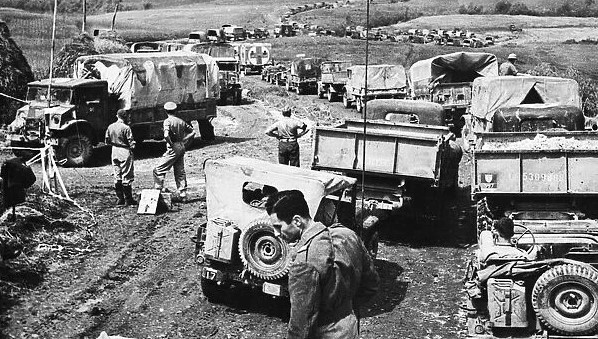In both world wars, there were men killed in action or who died in service who had a connection with Niagara-on-the-Lake but for various reasons were not commemorated on either the memorial clock tower cenotaph in Old Town or the Niagara Township war memorial in Queenston. In some cases, they lived for only a brief time in Niagara and had no family here when the monuments were built. In other instances, they had lived near McNab, not then part of NOTL or Niagara Township. While their names are not read out at the ceremonies at these monuments on Remembrance Day, they too should be remembered.
Ron Dale
Special to The Lake Report
In the Second World War, a total of 42,042 Canadians who enlisted in the armed forces died.
This included 22,917 in the Canadian Army, 17,101 in the RCAF and 2,024 in the Royal Canadian Navy.
Most were killed in combat, but a significant number died of disease or by accident. The latter includes Trooper Bruce Lenard Martin.
Born on May 5, 1924, he was the second-youngest child of Charles Martin and Annabelle McIntosh who lived on Lot 1, Concession 8, Grantham Township, which is now part of Niagara-on-the-Lake.
It was a large household with three sons and five daughters. The Martins were farmers who operated a dairy.
Bruce Martin was active in sports, playing baseball and hockey in season. When he finished Grade 8 in 1940, he chose not to attend secondary school. He worked for his father as a truck driver for the next three years.
When he turned 19, he was old enough to serve in the Canadian Army in a theatre of war and lost little time in enlisting.
On June 15, 1943, he travelled to Toronto and joined the 11th Armoured (Ontario) Regiment.
For the next six months he underwent training at Camp Borden as a driver and mechanic for various army vehicles.
He also qualified on the Lee Enfield rifle, Bren light machine-gun, Piat anti-tank weapon, Sten submachine-gun and hand grenades.
Although his unit was a tank regiment, he was not trained as a tank driver.
He was destined to be a truck driver whose role was to transport supplies from rear area depots to the front-line tanks and tankers.
On Dec. 24, 1943, he arrived by train in Halifax and embarked on a ship for passage to the U.K.
He disembarked at Liverpool on Jan. 3, 1944, but was not in England long. On Feb. 19, 1944, he boarded a ship bound for Italy where the 11th Armoured Regiment was fighting.
On arrival in Italy on March 3, Martin was transported to the headquarters of his regiment.
After his arrival, the Canadians continued to advance, slowly pushing the Germans from prepared defensive positions to even more formidable previously prepared “lines.”
During this campaign Martin travelled over mud-slickened roads that were pockmarked by artillery craters, ever in danger of running over a landmine.
As he approached the front lines to deliver fuel, rations, spare parts and ammunition to the tanks and tankers he was vulnerable to enemy artillery. And he always was at risk of being attacked by German aircraft.
During the summer, the pace of the war picked up. Rome fell on June 4, 1944, and Canadians participated in the breaking of the German defences of the Trasimene Line, the liberation of Florence in August, and the capture of the Gothic Line in September.
After Sept. 21, when the Allies entered Rimini, the men of the 11th Armoured Regiment were given a break prior to participating in a campaign to advance into the Po River valley.
The regiment withdrew to an encampment for rest, repair, resupply and refit.
On Sept. 24, Martin and 21 of his comrades were granted leave. The men climbed into the back of a troop truck driven by Corporal Rollings and set off on the Borgo San Lorenzo Road, taking the men to their holiday location.
The truck slowly climbed a very steep hill and then cresting it, started downhill heading toward a sharp curve and a steep embankment.
The brakes on the truck failed and it continue to pick up speed approaching the curve. The truck went off the road and rolled eight times.
The injured men were loaded into another truck to take them to the nearest casualty clearing station. Trooper Bruce Martin died en route and one of his comrades died shortly afterward.
The two men were initially buried near Siena, where the casualty clearing station was located. After the war they were reburied north of Rome at the Lake Bolsena British Empire Cemetery, which is maintained by the Commonwealth War Graves Commission.
Not all of those who made the ultimate sacrifice were killed in action. May they rest in peace and may they be remembered.
- On the heels of The Lake Report’s 53-part “Monuments Men” series, which exhaustively documented the story of every soldier commemorated on the town’s two cenotaphs, Ron Dale’s “Missing in Action” stories profile Niagara-on-the-Lake soldiers who died in wartime but are not listed on the town’s monuments. This is the 12th, and final, instalment.










